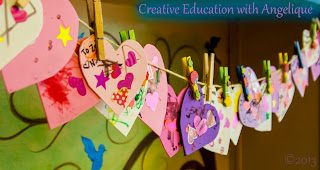Happy Thanksgiving, Everyone!
This week, instead of having my students (between ages 3 through 6) make some cookie-cutter Thanksgiving crafts such as turkeys, I planned lessons on child poverty. So many kids these days take everything for granted and don't realize how good they have it. My students are pretty respectful in class, but once in a while, parents come asking for advice, because their child is being disrespectful and selfish at home. I was inspired to teach about child poverty to give my students something to think about during their holiday break...
Here is one of the videos that I showed that especially touched each child. I skipped passed the very beginning of the nasty carcasses, because I don't think the kids were quite ready for that yet... While the children in this video appear to have nothing, they showed a great respect and appreciation for what they do have, and make the best of their situation. Near the end of the video, I pointed out how nice the children play with only each other (no toys or playgrounds in sight). Finally, at the end of the day, when I asked everyone what they were thankful for, their responses were very thoughtful as they had a new awareness of how lucky they really are...
Video on Child Poverty By Good Neighbors
This week, instead of having my students (between ages 3 through 6) make some cookie-cutter Thanksgiving crafts such as turkeys, I planned lessons on child poverty. So many kids these days take everything for granted and don't realize how good they have it. My students are pretty respectful in class, but once in a while, parents come asking for advice, because their child is being disrespectful and selfish at home. I was inspired to teach about child poverty to give my students something to think about during their holiday break...
Lesson on Child Poverty
First, I asked each child to share about what they were doing for the holidays. They all talked about "Thanksgiving" and how excited they were to eat turkey, play with toys, etc. After a few more discussions to prepare them for what was coming, I played some videos. I wasn't sure how the kids would respond, but I was pleased to see how interested and concerned they were. They actually asked for "more" videos, and they all had so many questions afterward, hopeful that the children were getting help.Here is one of the videos that I showed that especially touched each child. I skipped passed the very beginning of the nasty carcasses, because I don't think the kids were quite ready for that yet... While the children in this video appear to have nothing, they showed a great respect and appreciation for what they do have, and make the best of their situation. Near the end of the video, I pointed out how nice the children play with only each other (no toys or playgrounds in sight). Finally, at the end of the day, when I asked everyone what they were thankful for, their responses were very thoughtful as they had a new awareness of how lucky they really are...
Video on Child Poverty By Good Neighbors
































